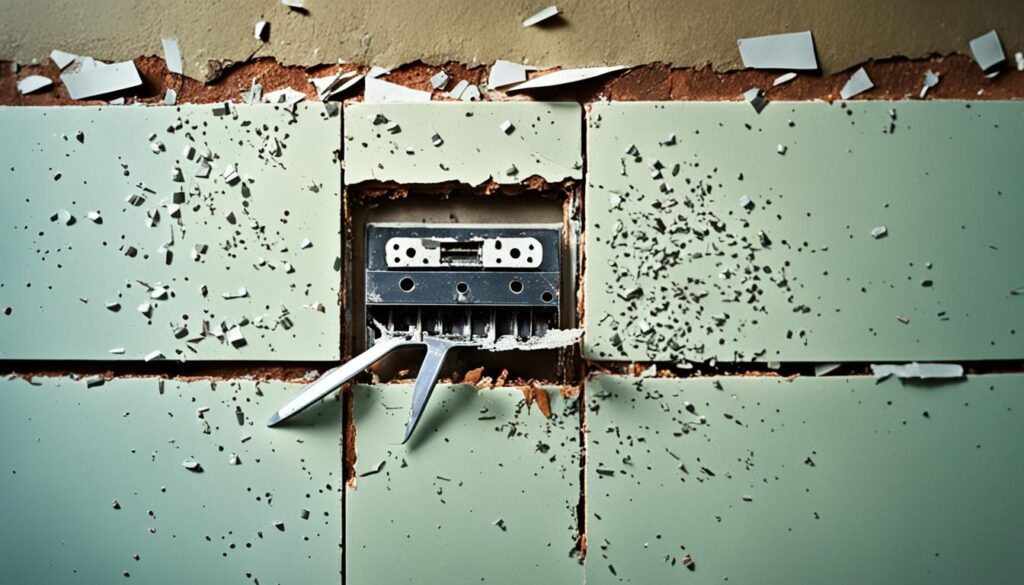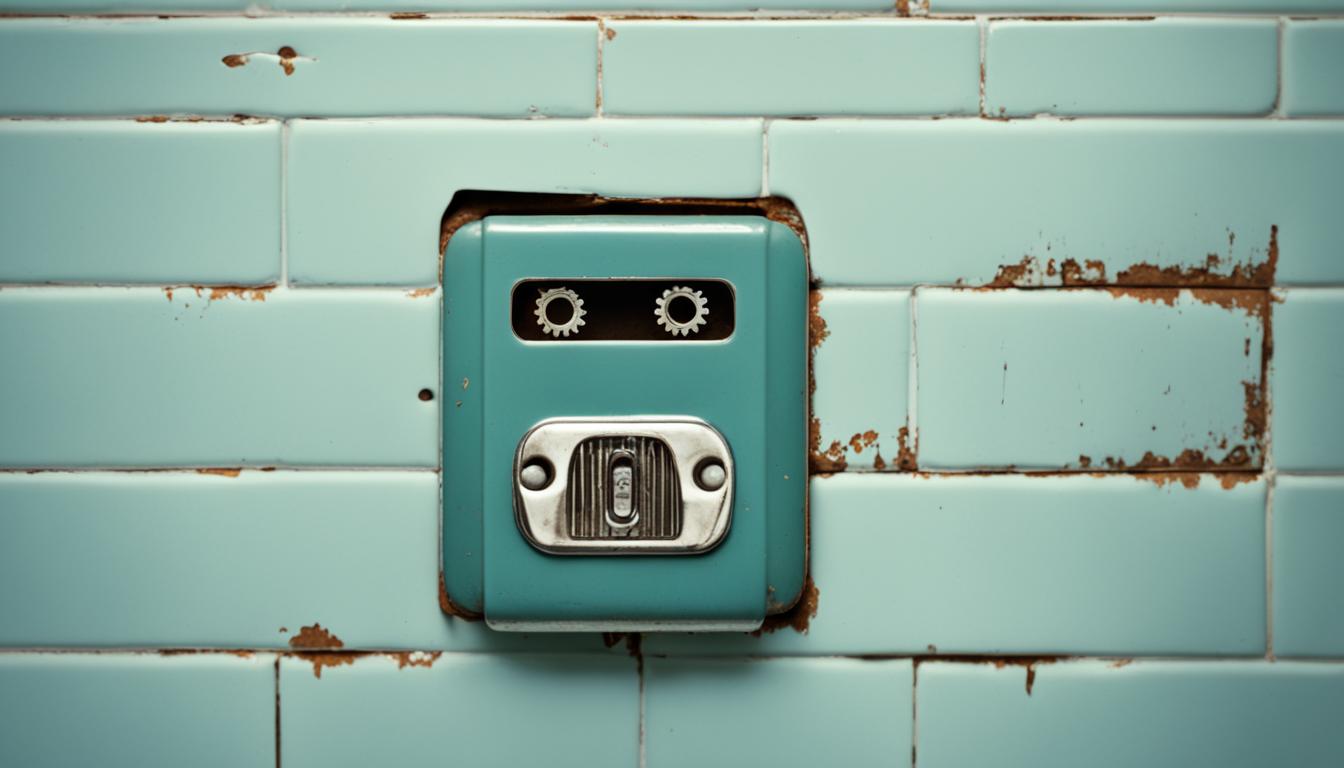Vintage bathrooms hold surprising secrets. One odd feature is the razor blade disposal slot from the early 1900s. These slots, often in medicine cabinets, let used blades fall into the wall cavity.
This unique disposal method gained popularity in the 1950s. It solved the problem of discarding sharp, biohazardous blades safely. People thought it would take centuries to fill the wall space with tiny blades.
By then, they believed a new disposal method would exist. This quirky design reflects the innovative solutions of the past.
Key Takeaways
- Vintage bathrooms from the early 1900s sometimes featured built-in razor blade disposal slots
- These slots allowed used razor blades to be dropped into the wall cavity for disposal
- Razor blade disposal slots were a common quirky home feature in the 1950s
- The slots addressed the issue of safely discarding sharp, biohazardous razor blades
- It was believed the wall cavity would take centuries to fill up with discarded blades
The Surprising Discovery of Razor Blades in Bathroom Walls
Home renovations often reveal unexpected treasures. One of the most startling finds is old, rusty razor blades hidden in bathroom walls. These demolition surprises leave people puzzled about their origins.

Nancy Keenan, an Atlanta builder, encountered this while demolishing a 1920s home. Her team knocked down a bathroom wall, unleashing a shower of old blades. Keenan photographed the collected razor blades as evidence of this unusual discovery.
Sometimes, these blades are found in first-floor ceilings. They fall through the wall from second-floor bathrooms. Demolishing old plaster ceilings can result in a surprising razor blade shower.
This strange building practice has sparked curiosity among many. People wonder about its purpose and history. The discovery of hidden razor blades continues to baffle homeowners and contractors alike.
The History of Razor Blade Wall Slots
Safety razors changed shaving and bathroom design in the early 1900s. Gillette’s 1903 safety razor offered men a safer, at-home shaving option. This innovation eliminated the need for barbershop visits and reduced the risk of cuts.
As safety razors grew popular, manufacturers added medicine cabinets to bathroom walls. These cabinets had a small slot for disposing of used razor blades. This design made blade disposal easy and safe.
Discarded blades collected on the bottom-plate stud inside the wall cavity. This hidden collection of blades remained untouched for decades. The practice of installing razor blade slots eventually faded away.
Today, these slots are a fascinating remnant of early 20th-century innovation and convenience. They remind us of how bathroom design has evolved over time.
The Decline of Razor Blade Wall Slots
Modern shaving brought changes to razor blade disposal. By the 1960s, blade companies made longer-lasting razors for multiple uses. This reduced the need for frequent blade disposal.
In the mid-1970s, Bic introduced lightweight, disposable razors. These all-in-one razors could be used and discarded easily. The need for separate blade disposal decreased.
As bathrooms were renovated, old medicine cabinets were replaced or covered. The practice of in-wall razor blade disposal faded from memory. Old blades were often rediscovered during home renovations.
Today, we have eco-friendly ways to dispose of razor blades. Used blades can be collected in metal tins for recycling. Some companies offer razors made from recyclable materials with disposal boxes.
These modern solutions are safer and more sustainable. They provide better alternatives to the old practice of discarding blades in bathroom walls.

Leave a Reply